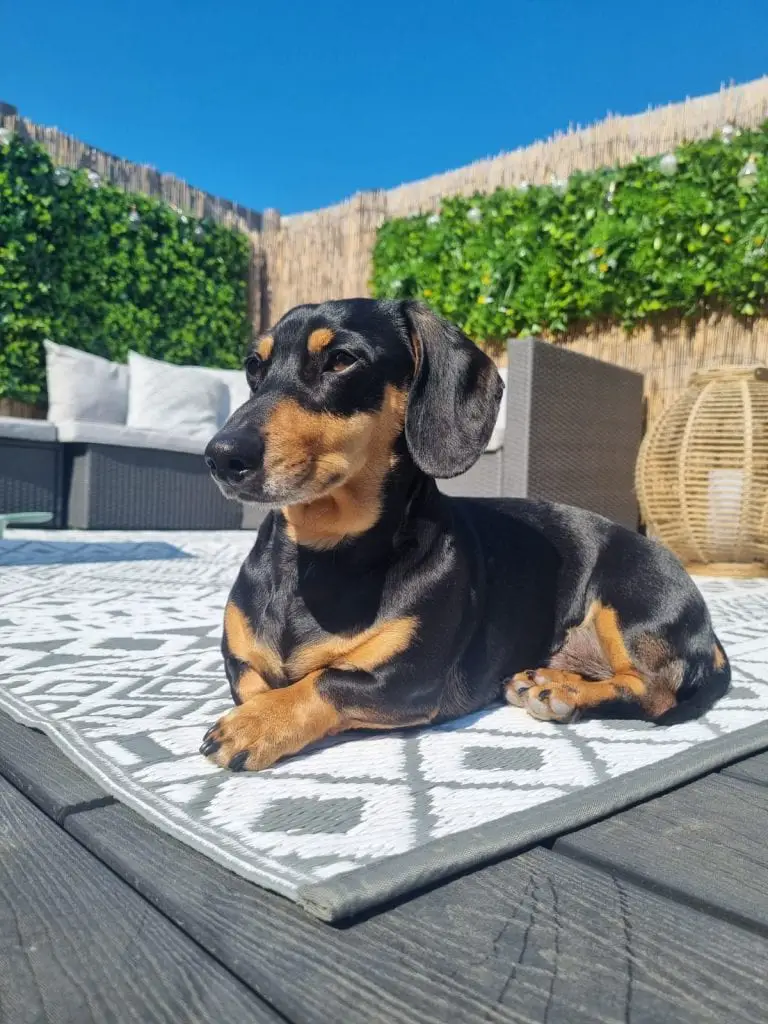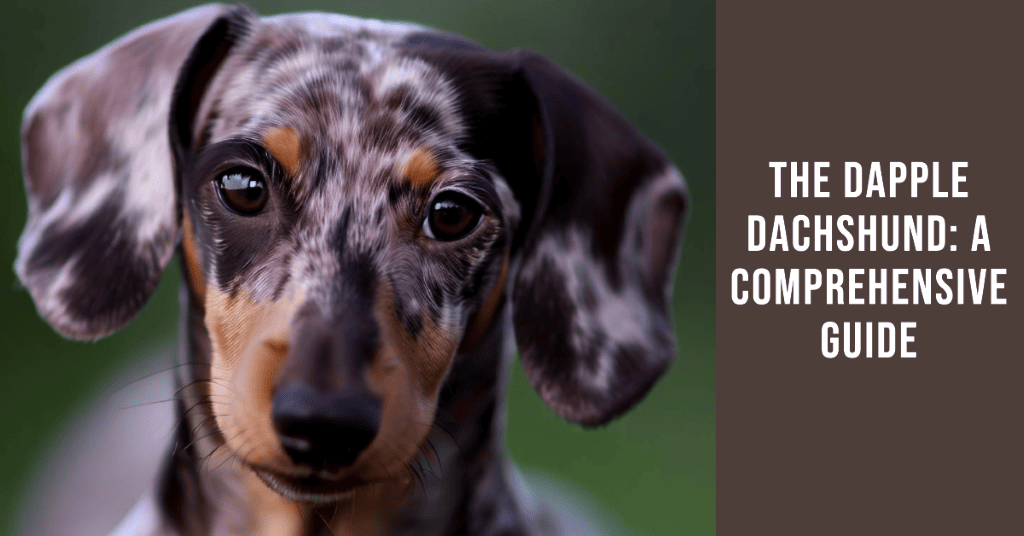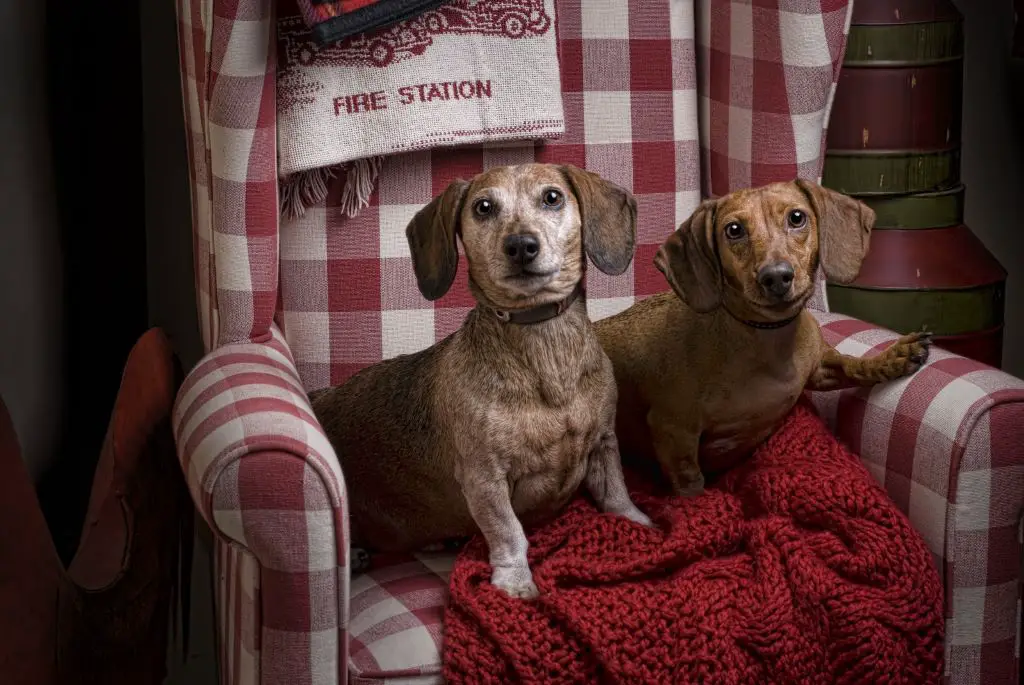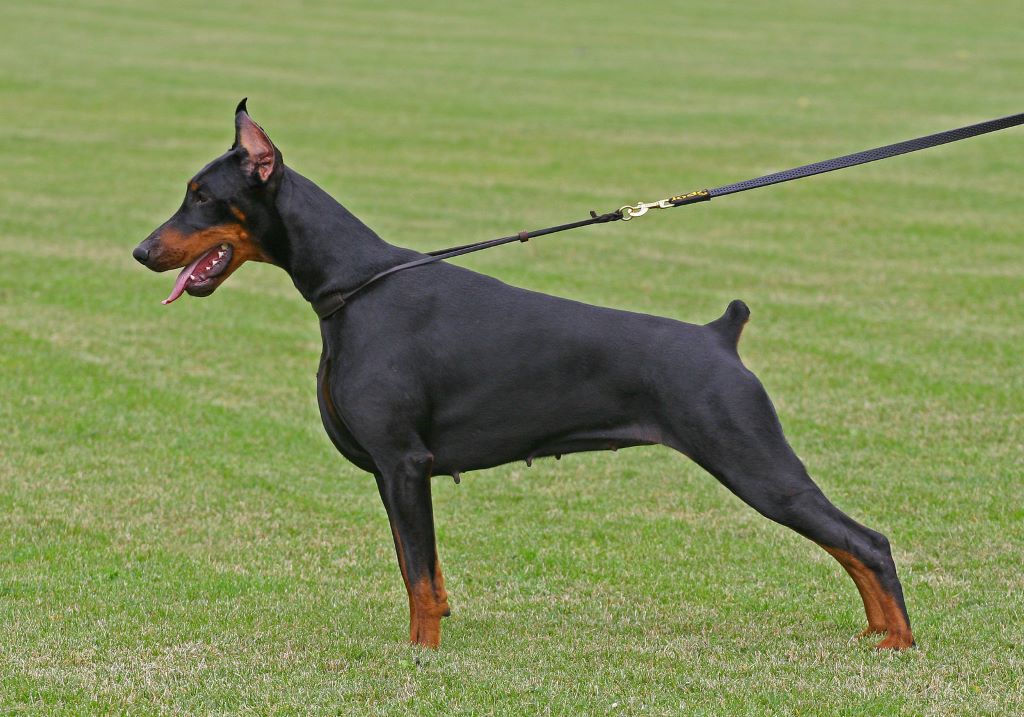Warning: Trying to access array offset on value of type bool in /home/u778996160/domains/dachshundtalk.com/public_html/wp-content/plugins/wp-word-count/public/class-wpwc-public.php on line 123
Warning: Trying to access array offset on value of type bool in /home/u778996160/domains/dachshundtalk.com/public_html/wp-content/plugins/wp-word-count/public/class-wpwc-public.php on line 123
Are you looking to add a furry friend to your family? If so, have you considered a dapple dachshund? These clever, lively, and courageous dogs make the perfect addition to any household. Despite their small size, they are incredibly protective of their owners and can sometimes get scrappy with other dogs. The best way to combat this is to ensure your dog is familiar with other dogs and people when they’re young.
Dapple dachshunds are simply dachshunds with a particular type of coat pattern. If you’ve ever seen a dog with mottled patches of color on a solid or double-colored coat, often with one or both blue eyes, you’ve seen a dapple. In other breeds of dogs, particularly herding breeds, this is called a merle pattern.
The dapple pattern is caused by a unique gene that affects the distribution of pigment in the dog’s coat. While dapple dachshunds are highly sought after for their unique coat pattern, it is important to note that breeding two dapple dachshunds together can result in health issues for the puppies.
Origin and History of Dapple Dachshunds
Dapple Dachshunds are a beautiful color pattern with multicolored merle- or brindle-like splotches. They can be full dapple patterns or have large areas of dapple. Some puppies from one Merle parent will have a puppy with just a small spot, though that is still considered dapple.
The Dachshund breed originated in Germany in the 15th century. German breeders developed Dachshunds as stubborn and tenacious hunting dogs. They bred standard-size Dachshunds to hunt badgers and miniature Dachshunds to hunt rabbits. This is where the breed gets its name. “Dachshund” in German translates to “badger dog.”
Around the late 17th century, the Dachshund breed began to take shape. It’s little legs and slender body allowed the Dachshund to scurry deep into badger burrows and claim its prey. The breed quickly became popular in Germany and was eventually brought to the United States in the late 1800s.
In 1895, the American Kennel Club (AKC) recognized the Dachshund breed. Today, the Dachshund is a popular breed in the United States and around the world.
Dapple Dachshunds gained popularity in the mid-20th century. The unique and striking color pattern quickly became a favorite among Dachshund enthusiasts. However, breeding two dapple Dachshunds can result in a double dapple Dachshund, which can have health problems such as blindness and deafness.
Understanding the Dapple Pattern
If you are a Dachshund lover, you might have come across the term “dapple” when referring to their coat pattern. A dapple Dachshund has a unique coat pattern that makes them stand out from other Doxies. In this section, we will take a closer look at the dapple pattern, how it is formed, and what it means for your Dachshund.
The dapple pattern is caused by the Merle gene, which is responsible for giving the coat a speckled or spotted appearance. This gene dilutes the base coat color, creating lighter markings or spots on the coat. The dapple pattern can occur in any coat color, including red, black, blue, chocolate, cream, and many more.
It’s important to note that you cannot get a dapple Dachshund by breeding two solid-colored parents. One parent must have the dapple pattern on their coat to produce a dapple offspring. Breeding two dapple Dachshunds can result in double dapple Dachshunds, which have a higher risk of health problems.
Dappling is the process of creating the dapple pattern on the coat. It is a random process, and no two Dachshunds will have the same dappling pattern. Dappling can occur in different intensities, from light to heavy, and can even create white markings on the coat.
Coat patterns can also affect the color of the Dachshund. A Dachshund can have a sable, brindle, or piebald pattern, which can influence the color of the coat. However, the dapple pattern is unique and does not depend on the coat pattern.

Physical Characteristics
Dapple dachshunds are a small breed of dog that comes in a variety of sizes, including standard and miniature. They have a distinctive coat pattern that features light spots or superimposed markings on a contrasting base color. The dapple pattern can occur on any coat type, including smooth-haired, long-haired, and wire-haired.
These dogs have long bodies and short legs, which makes them well-suited for hunting small game. They typically stand between 8 and 9 inches tall at the shoulder and weigh between 16 and 32 pounds. Their ears are long and floppy, and their nose is usually black.
Dapple dachshunds come in a wide range of coat colors, including red, black, blue, and cream. The most common base coat colors are tan, chocolate, or black, but they can also have a silver or blue base coat. The dapple pattern is caused by a genetic mutation, and it can occur on any of these coat colors.
In addition to their distinctive coat pattern, dapple dachshunds are known for their expressive eyes. They can have brown, blue, or a combination of both colors. Their life span is typically between 12 and 16 years.
Temperament and Personality Traits
Dapple Dachshunds are known for their unique and beautiful coat patterns, but they also have distinctive personality traits. Here are some of the temperament and personality traits commonly associated with Dapple Dachshunds:
-
Loyal: Dapple Dachshunds are known to be loyal to their owners and will often follow them around the house.
-
Stubborn: Dapple Dachshunds can be stubborn at times, which can make training a challenge. However, with patience and consistency, they can be trained to follow commands.
-
Independent: Dapple Dachshunds are independent dogs and can entertain themselves for hours. They are not always in need of attention from their owners.
-
Intelligent: Dapple Dachshunds are intelligent dogs and can learn new tricks quickly. They are also problem-solvers and can figure out how to get what they want.
-
Barking: Dapple Dachshunds are known to be vocal dogs and will bark at anything they perceive as a threat or danger.
-
Intelligence: Dapple Dachshunds are intelligent dogs and can be trained to do a variety of tasks, including hunting, tracking, and agility.
Overall, Dapple Dachshunds are unique dogs with distinct personalities. They are loyal, independent, and intelligent, but can also be stubborn and vocal. With proper training and socialization, they can make great pets and companions.
Health Concerns and Lifespan
When it comes to the health of dapple dachshunds, there are a few concerns to keep in mind. Like other dachshunds, they can be prone to intervertebral disc disease (IVDD), which is a spinal cord condition that can cause pain, paralysis, and even death. This is because of their long body and short legs, which puts pressure on their spine. It’s important to keep your dapple dachshund at a healthy weight and avoid activities that could strain their back.
In addition to IVDD, dapple dachshunds may be more prone to certain health problems due to their coat pattern. The merle gene responsible for the dapple pattern has been linked to hearing loss, vision problems, and even blindness. They may also be more susceptible to skin cancer due to their light-colored patches. It’s important to keep your dapple dachshund out of direct sunlight and to regularly check their skin for any signs of abnormalities.
Despite these concerns, dapple dachshunds can still live a long and healthy life with proper care. On average, they have a lifespan of 12 to 15 years, but with good genetics and care, they can live up to 16 years. Regular visits to the vet, a healthy diet, and exercise can all contribute to a longer and happier life for your dapple dachshund.
It’s also worth noting that some dapple dachshunds may be prone to other health issues not related to their coat pattern, such as cataracts and osteogenesis imperfecta. If you’re considering getting a dapple dachshund, it’s important to research reputable breeders who prioritize the health and well-being of their dogs.
Care and Maintenance
Caring for a dapple dachshund is not difficult, but it does require some attention and commitment. Here are some tips to help you keep your furry friend healthy and happy.
Exercise Needs
Dapple dachshunds have moderate exercise needs. They enjoy going for walks and playing, but they are not as active as some other breeds. A daily walk or playtime in the backyard should be enough to keep your dapple dachshund happy and healthy.
Training
Dapple dachshunds are very intelligent, but they can be stubborn at times. Early training and socialization are important to ensure that your dapple dachshund is well-behaved and obedient. Positive reinforcement techniques, such as treats and praise, work well with this breed.
Food and Weight
Dapple dachshunds should be fed high-quality dog food that is appropriate for their age, size, and activity level. Overfeeding can lead to obesity, which can cause health problems such as joint pain and diabetes. Monitor your dapple dachshund’s weight and adjust their food intake as needed.
Brushing and Shedding
Dapple dachshunds have short, smooth coat that requires minimal grooming. Brushing once a week with a soft-bristled brush can help remove loose hair and keep their coat shiny. They are moderate shedders, so regular brushing can also help reduce shedding.

Unlock Better Skin & Joint Health For Your Dachshund
Caring for Their Health
Dapple dachshunds are generally healthy dogs, but they are prone to some health issues. Eye problems and deafness can occur in double-dappled dachshunds, so it is important to buy from a reputable breeder who screens their dogs for these conditions. Regular veterinary check-ups can help detect and treat any health issues early.
Breeding and Puppies
Breeding dapple dachshunds requires careful consideration to avoid potential health issues. It is important to breed from healthy and purebred parents to reduce the risk of genetic disorders. The merle gene is responsible for the dapple pattern, and breeding two dapple dachshunds can result in double dapple puppies, which have a higher risk of congenital disabilities.
If you are considering getting a dapple dachshund puppy, it is important to find a reputable breeder who prioritizes the health and well-being of their dogs. A reputable breeder will provide health certificates for both parents and ensure that the puppies receive proper veterinary care and socialization.
Dapple dachshund puppies are typically born with solid-colored coats and develop their dapple pattern as they grow older. The dapple pattern can vary from small spots to large areas of color. It is important to note that not all dapple dachshunds are the same, and each puppy will have a unique pattern.
The cost of a dapple dachshund puppy can vary depending on the breeder and location. Miniature dachshunds tend to be more expensive than standard-sized dachshunds, and dapple dachshunds may also be more expensive due to their unique coat pattern. It is important to research and compare prices from multiple breeders to ensure that you are getting a fair price for your puppy.
Different Variations
Dachshunds come in different variations, including different coat colors and patterns. These variations can be observed in all three coat types of Dachshunds, namely smooth, wire-haired, and long-haired. Here are some of the different variations of Dachshunds:
-
Tan: Tan is a common coat color for Dachshunds. It can range from light to dark shades.
-
Blue: Blue is a rare coat color for Dachshunds. It is a dilution of black and gives the coat a bluish-gray appearance.
-
Red: Red is another common coat color for Dachshunds. It can range from light to dark shades.
-
Black: Black is a less common coat color for Dachshunds. It can range from solid black to black and tan.
-
Cream: Cream is a light-colored coat variation for Dachshunds. It can range from off-white to light beige.
-
Chocolate: Chocolate is a less common coat color for Dachshunds. It can range from light to dark shades of brown.
-
Silver: Silver is a rare coat color for Dachshunds. It is a dilution of black and gives the coat a silvery-gray appearance.
-
Brindle: Brindle is a pattern that can be observed in Dachshunds. It is a mix of brown and black stripes on a tan or cream background.
-
Black and Tan: Black and tan is a common coat variation for Dachshunds. It is a mix of black and tan colors on the coat.
-
Dapple Doxie: Dapple Doxies have a unique and beautiful cloud-shaped pattern on their coats. They can come in any of the Dachshund breed coat colors and can also be observed in all of the three coat varieties of Doxies.
-
Wirehaired: Wirehaired Dachshunds have a coarse, wiry coat that requires regular grooming.









